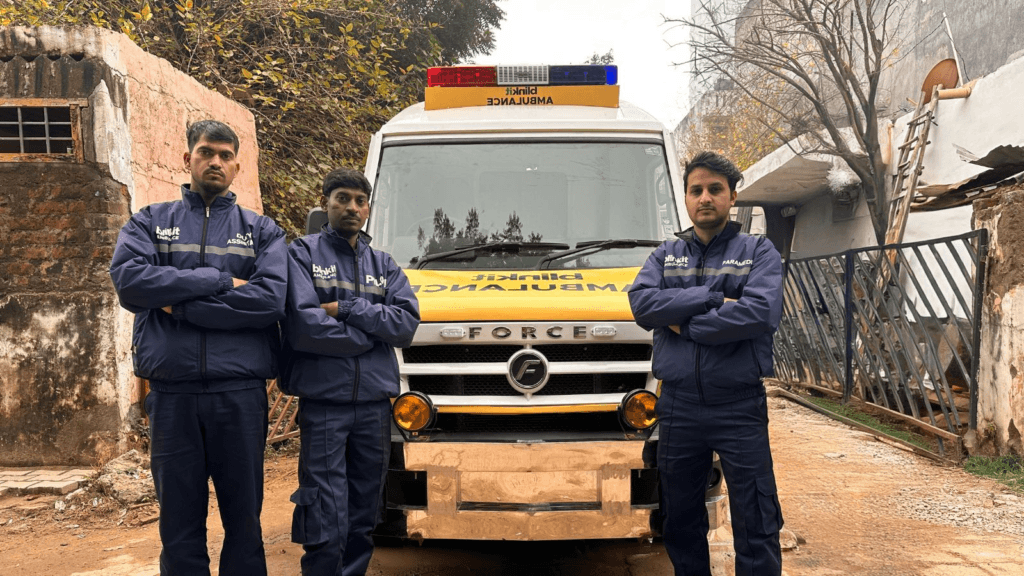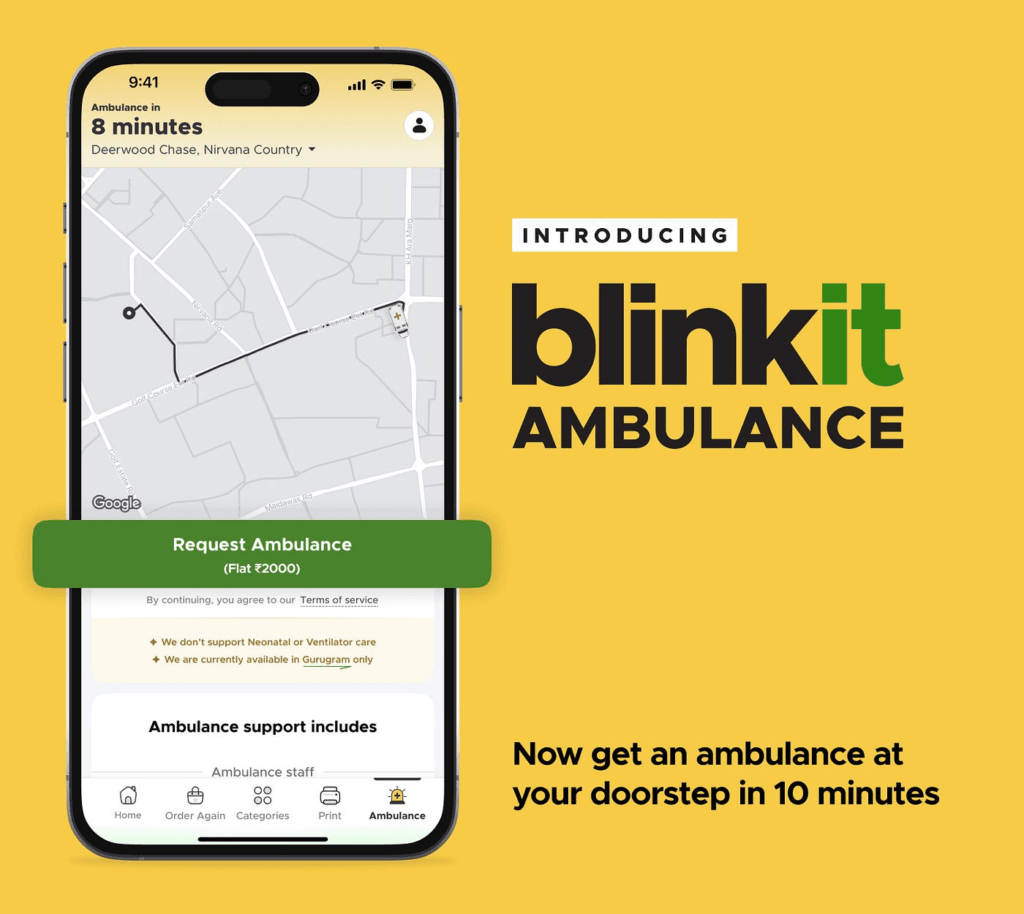
In a move that could redefine emergency healthcare in India, Blinkit, widely known for its 10-minute grocery deliveries, has launched a 10-minute ambulance service. This initiative aims to address critical gaps in emergency medical response times, ensuring that life-saving assistance reaches people faster than ever before.
But what led Blinkit to venture into healthcare? What does this say about the current state of emergency services in India? Let’s break it down.
The Idea Behind Blinkit’s Ambulance Service
Blinkit’s core strength lies in its hyperlocal delivery infrastructure and real-time tracking technology. By extending these capabilities to emergency services, the company is bridging a crucial gap in quick medical assistance.
How It Works

- Seamless Booking via App – Users can request an ambulance through the Blinkit app, which has a dedicated section for emergency services.
- Advanced Location Tracking – The system detects the user’s location and dispatches the nearest available ambulance.
- Strategic Placement of Ambulances – Blinkit has partnered with hospitals and private ambulance providers to ensure quick accessibility.
- Live Tracking & Communication – Users can track their ambulance in real-time and even communicate with paramedics while waiting.
Why Did Blinkit Introduce This Service?
1. India’s Ambulance Crisis
India has long faced challenges in ambulance accessibility, especially in densely populated and rural areas. Delayed response times often mean that medical emergencies turn fatal before patients receive necessary care.
2. The Golden Hour Factor
Medical experts stress the importance of the golden hour—the first hour after a medical emergency when immediate care can save lives. Whether it’s a heart attack, stroke, or accident, getting an ambulance within minutes can be the difference between life and death.
3. Learning from the COVID-19 Crisis
The COVID-19 pandemic exposed major flaws in India’s healthcare system, including the lack of readily available ambulances. Blinkit’s initiative is a step toward preventing such crises in the future.
Real-World Impact: A Doctor’s Perspective
Dr. Deepak Agrawal, a Professor of Neurosurgery at AIIMS, New Delhi, has emphasized the importance of timely medical assistance in critical cases. He has spoken about instances where quick ambulance response has significantly improved a patient’s chances of survival and recovery.
Such testimonials highlight how technology-driven solutions can revolutionize emergency healthcare.
The Road Ahead
Blinkit’s 10-minute ambulance service is not just an innovation—it’s a lifesaving mission. As the service expands across cities, it has the potential to:
✅ Reduce ambulance wait times
✅ Improve medical emergency responses
✅ Set a new benchmark for public-private healthcare collaborations
This initiative is a reminder that businesses can go beyond profits and create solutions that truly impact lives. With technology, speed, and social responsibility, Blinkit is proving that fast deliveries can also save lives.
Final Thoughts
Blinkit’s entry into emergency healthcare is bold, timely, and much needed. By using its logistical expertise to solve a real-world problem, the company is setting a new precedent for innovation in healthcare services.
As the initiative grows, it will be exciting to see how other companies step up to contribute to life-saving solutions. The future of emergency healthcare in India just got a little brighter.
What are your thoughts on this?
